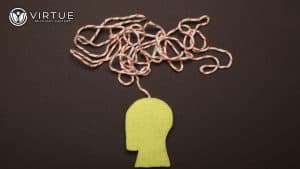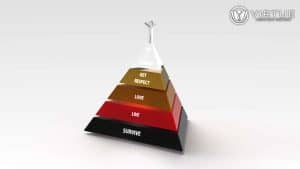Introduction
Teenage marijuana addiction is on the rise. Parents and guardians can prevent the situation from escalating by noticing early signs. This article focuses on the signs of marijuana use in teenagers and offers information to assist you in identifying and dealing with this problem.
Takeaways
| Signs | Description |
| Changes in Appearance | Unexplained weight changes, bloodshot eyes, poor hygiene. |
| Behavioral Shifts | Loss of interest in activities, neglecting responsibilities. |
| Academic Performance | Declining grades, missing school frequently. |
| Mood Swings | Irritability, anxiety, or depression. |
| Paraphernalia | Presence of pipes, rolling papers, or strong marijuana odor on belongings. |
Changes in Appearance
Teens addicted to marijuana often exhibit noticeable changes in their appearance. These can include:
-
Unexplained weight changes:
One of the most common symptoms of marijuana addiction in teens is unexplained weight changes. Marijuana can cause increased hunger, or the “munchies,” while others may lose their appetite. Unexplained weight changes, whether weight gain or weight loss, can be a sign of substance abuse. Parents and guardians should be on the lookout for sudden changes in their teens’ weight that cannot be explained, as this may be a sign of marijuana use and dependency.
-
Bloodshot eyes:
One of the most visible signs of marijuana use is bloodshot eyes. THC, the psychoactive substance in marijuana, can cause dilation of blood vessels in the eyes, which results in a redness and a glassy look. This symptom is usually chronic and may be associated with a stare or a blank expression. If someone abusing drugs like marijuana has red eyes often, then it may be an indication that the teen has a marijuana addiction.
-
Poor hygiene:
Another sign of marijuana use among teens is poor hygiene. As addiction increases, hygiene and cleanliness become less of a priority for the individual. Teenagers may forego brushing their hair, combing their teeth, or changing their clothes as often as possible. This decline in self-care can be attributed to the impact of marijuana on motivation and personal goals. If a once neat and clean teenager begins to neglect personal hygiene, it may be an indication of marijuana use and addiction.
Behavioral Shifts
Behavioral changes are another significant indicator of marijuana addiction. These shifts can manifest as:
- Loss of interest: Previously enjoyed activities and hobbies are abandoned.
- Neglecting responsibilities: Failing to complete school assignments or household chores.
- Social withdrawal: Isolating from family and old friends, spending more time with new or questionable peers.
Academic Performance A decline in academic performance is a red flag for marijuana addiction. Signs include:
- Declining grades: A noticeable drop in academic performance.
- Frequent absences: Missing school more often, often without a valid reason.
- Lack of concentration: Difficulty focusing on studies and assignments.
Mood Swings
One of the most common symptoms of marijuana addiction in teens is mood swings. Mood swings are common in addiction and can be sudden and severe, with the individual experiencing irritability, anxiety, and depression. Teens may become more sensitive emotionally and may get easily annoyed or angry. They may also have periods of paranoia and increased anxiety, which can make them seem paranoid or anxious. These mood swings can also affect the relationship between the teen and his or her family and friends, which in turn worsens the addiction. Identifying these mood changes early can assist in getting the right care and assistance.
Marijuana addiction can cause significant mood changes, such as:
- Irritability: Unexplained anger and frustration.
- Anxiety and paranoia: Heightened anxiety levels and feelings of paranoia.
- Depression: Persistent sadness or depressive symptoms.
Marijuana Paraphernalia
The presence of drug paraphernalia is a clear sign of marijuana use. Common items include:
- Pipes and bongs: Devices used to smoke marijuana.
- Rolling papers: Papers used to roll joints.
- Strong odor: The smell of marijuana on clothes, rooms, or belongings.
Conclusion
Recognizing the signs of marijuana addiction in teens is crucial for early intervention and preventing long-term substance abuse. By being aware of physical changes like unexplained weight fluctuations, bloodshot eyes, and poor hygiene, as well as behavioral shifts and mood swings, parents and guardians can take necessary steps to address the issue. Identifying the presence of drug paraphernalia also provides clear evidence of usage. Understanding and acting on these signs can help guide teens toward recovery and prevent long-term consequences.
Help with Marijuana Addiction is Just a Call Away
Treatment centers like Virtue Recovery Chandler use evidence-based methods and compassionate care to help those with an addiction take comfort in knowing that there are robust support systems ready to guide you through this journey.
Enrolling in a reputable recovery program represents an important step towards regaining a healthy, addiction-free life you are entitled to.
FAQ:
Q: What are the physical signs of marijuana addiction in teens?
A: Physical signs include unexplained weight changes, bloodshot eyes, and poor hygiene.
Q: How does marijuana addiction affect a teen’s behavior?
A: Teens may lose interest in activities, neglect responsibilities, and withdraw socially.
Q: What academic changes might indicate marijuana addiction?
A: Common indicators include declining grades, frequent absences, and lack of concentration.
Q: How can marijuana addiction influence a teen’s mood?
A: Addiction can cause irritability, anxiety, paranoia, and depression.
Q: What paraphernalia might signal marijuana use?
A: Items such as pipes, rolling papers, and the distinct odor of marijuana on belongings.
Are Mood and Emotional Changes Signs of Marijuana Addiction in Teens?
Mood and emotional changes can indeed be signs of marijuana addiction in teens. Understanding the impact of drug addiction on young people is crucial for early intervention and support. Unexplained mood swings, irritability, and isolation can all be indicators of potential substance abuse. It’s important to take these signs seriously.
Citations
Conifer Park: “10 Signs of Marijuana Addiction”
https://www.coniferpark.com/blog/10-signs-of-marijuana-addiction
This article outlines signs of marijuana addiction, including physical dependence, withdrawal symptoms, increased tolerance, and negative consequences on daily functioning.
JAMA Pediatrics: “Acute Mental Health Symptoms in Adolescent Marijuana Users”
https://jamanetwork.com/journals/jamapediatrics/fullarticle/2717776
This study highlights the association between marijuana use and acute psychotic symptoms in adolescents, such as paranoia and hallucinations.
National Institutes of Health (NIH): “Effects of Adolescent Cannabis Use on Motivation and Depression”
https://www.ncbi.nlm.nih.gov/pmc/articles/PMC8168938
This review discusses the impact of heavy adolescent cannabis use on motivation, educational outcomes, and depressive symptoms.
Colorado POST: “Marijuana-Facts-for-Teens.pdf”
https://post.colorado.gov/sites/post/files/documents/Marijuana-Facts-for-Teens.pdf
This PDF document provides information on the symptoms of marijuana withdrawal, including irritability, problems sleeping, anxiety, and cravings.
SAMHSA Publications: “Tips for Teens: The Truth About Marijuana”
https://store.samhsa.gov/product/tips-teens-truth-about-marijuana/pep19-05
This fact sheet lists the short- and long-term effects of marijuana use and signs of marijuana addiction.
These citations provide a comprehensive overview of the signs of marijuana addiction in teens, including physical, behavioral, and psychological indicators.









